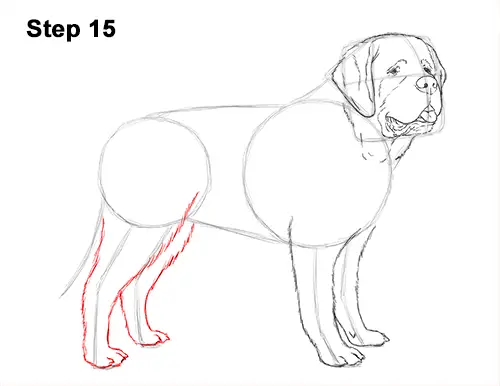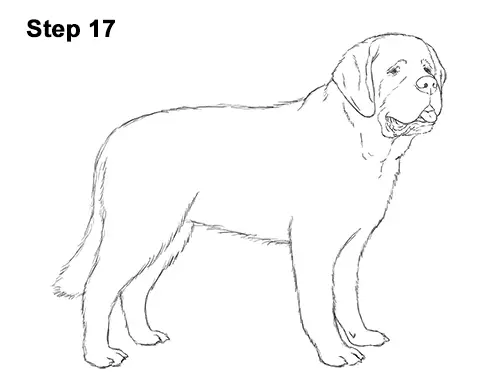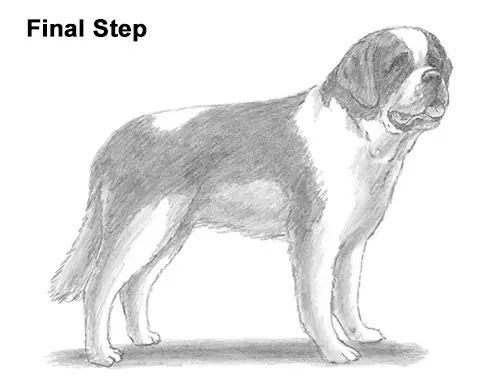
Step 15: Use the lines to the left as guides to draw the St. Bernard's hind legs. Start by lightly sketching the shape of the leg as you follow the basic path of the guide line. Once you get the structure of the leg right, darken the lines using quick, short strokes. Add a couple of curved lines at the tip of the dog's foot for the toes. Draw the hind leg on the other side using the last line as a guide. The top part of this leg is being blocked by the other hind leg, so only draw the visible bottom portion.

Step 16: Use the remaining lines as guides to draw the rest of the St. Bernard's body. Use quick, short strokes as you follow the guide lines and darken the shape of the body. Use longer strokes if you want your St. Bernard to have longer fur. Use the line on the left side as a guide to draw the dog's tail. Use longer strokes for a shaggier tail.

Step 17 (optional): For a cleaner look, erase as much as you can of the initial guide lines. Don't worry about erasing all of the guides. It's okay to leave some behind. Re-draw any final sketch lines that you may have accidentally erased.

Final Step (optional): Add some shading to your St. Bernard drawing to give it more dimension and volume. Pick the direction of the light source when shading so that the shadows are consistent with it. Don't worry about shading too smoothly. The rough value gives the dog's coat a shaggy texture.
Add a cast shadow underneath. This helps ground the dog so it doesn't appear to be floating.
You can add even more value throughout your drawing for extra detail. St. Bernards usually have big, brown patches around the eyes and on the ears, so use a dark value in these areas. Vary the pressure on your pencil to get different degrees of tonal value. Add an extra dark value around the eyes and on the nose. Shade a bit of the front part of the muzzle and add some spots of varying sizes too. Draw the outline of a pattern using quick, short strokes across the back of the body. Shade inside the outline using a medium value. Use strokes that go in the general direction of the fur. It's always a good idea to use reference as you draw. If you have a St. Bernard or a similar breed, try to duplicate its coat on your drawing! Remember to pause the video after each step to draw at your own pace.
Thanks for watching! Subscribe to the How2DrawAnimals YouTube Channel for a new tutorial every Tuesday.
To learn how to draw popular cartoon characters, visit EasyDrawingTutorials.com.







